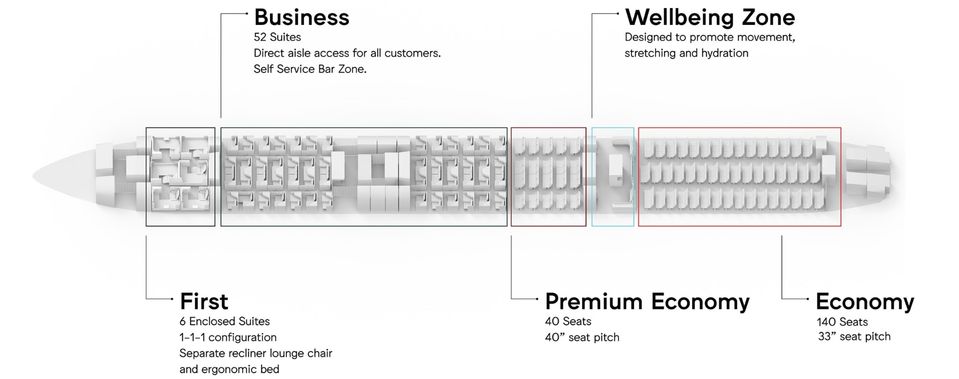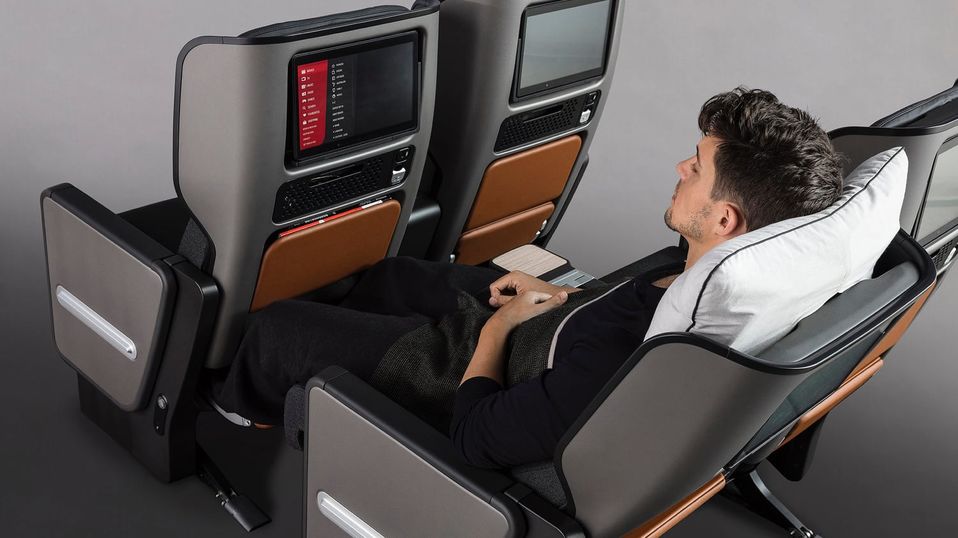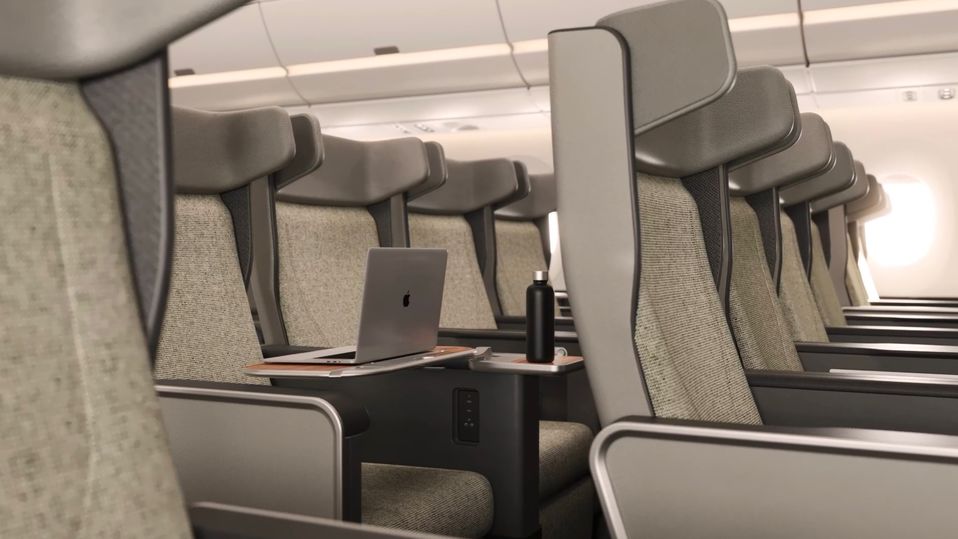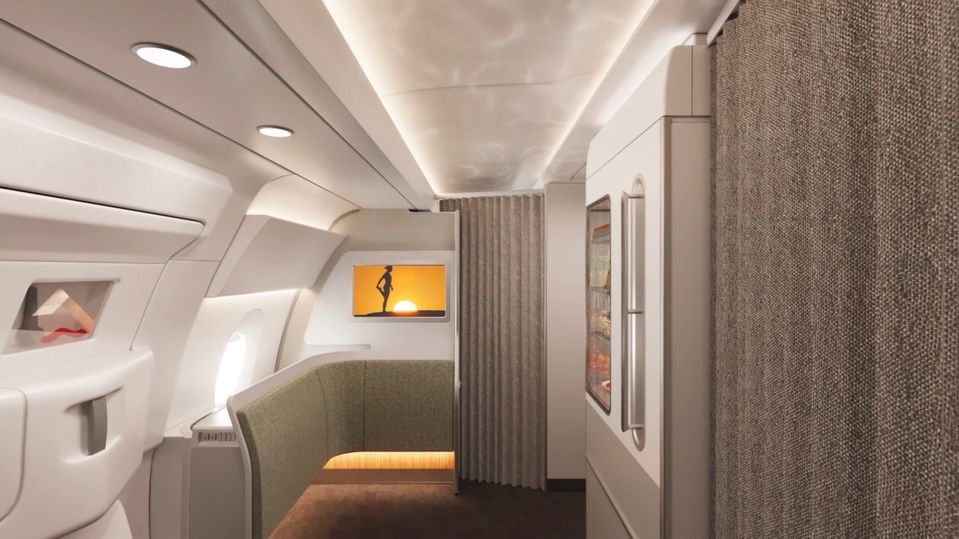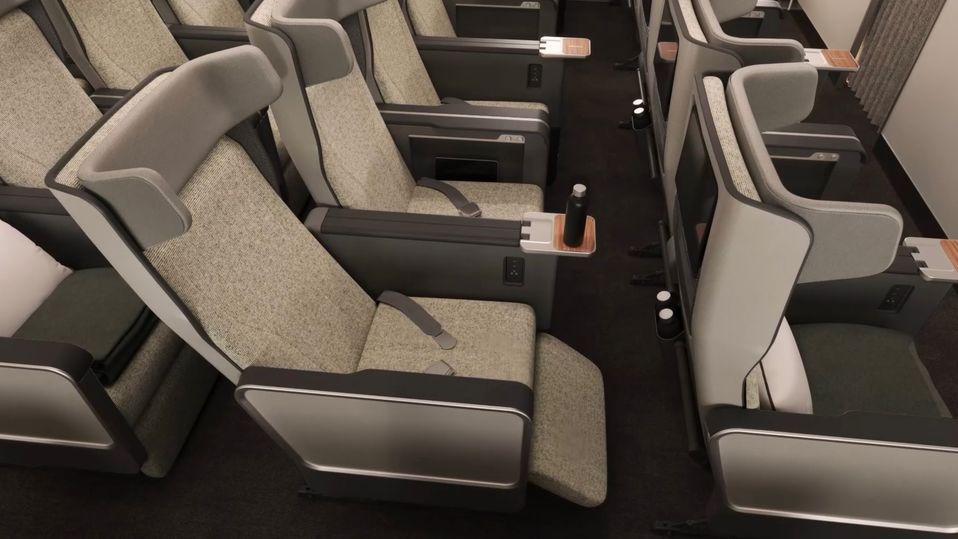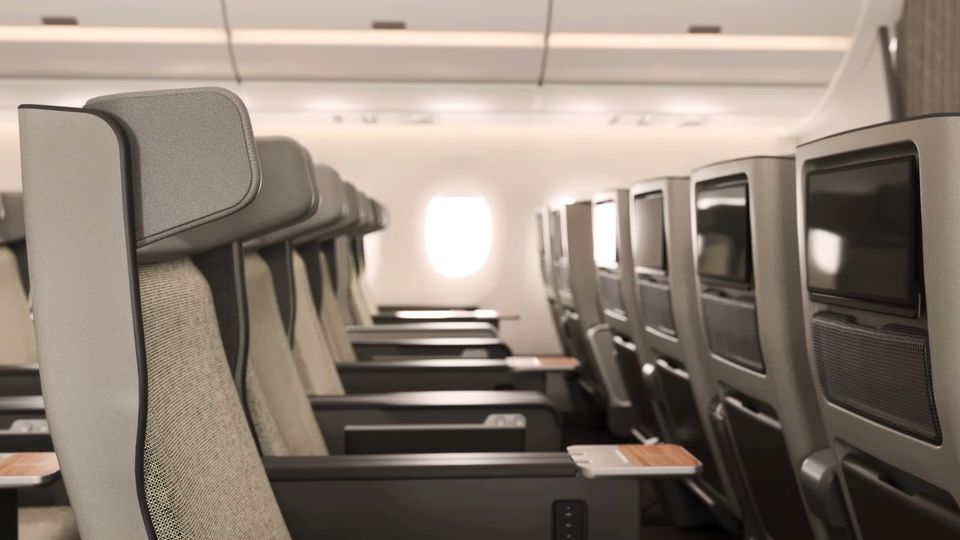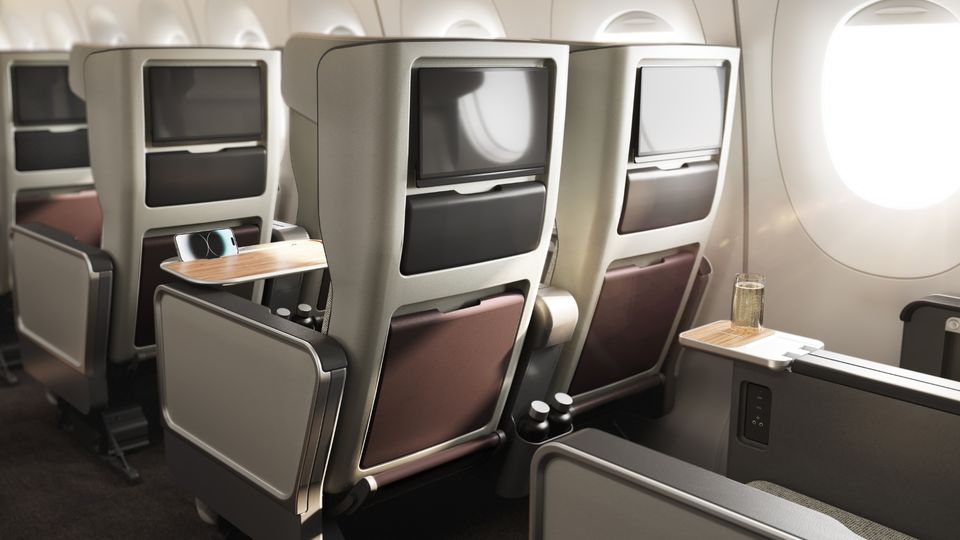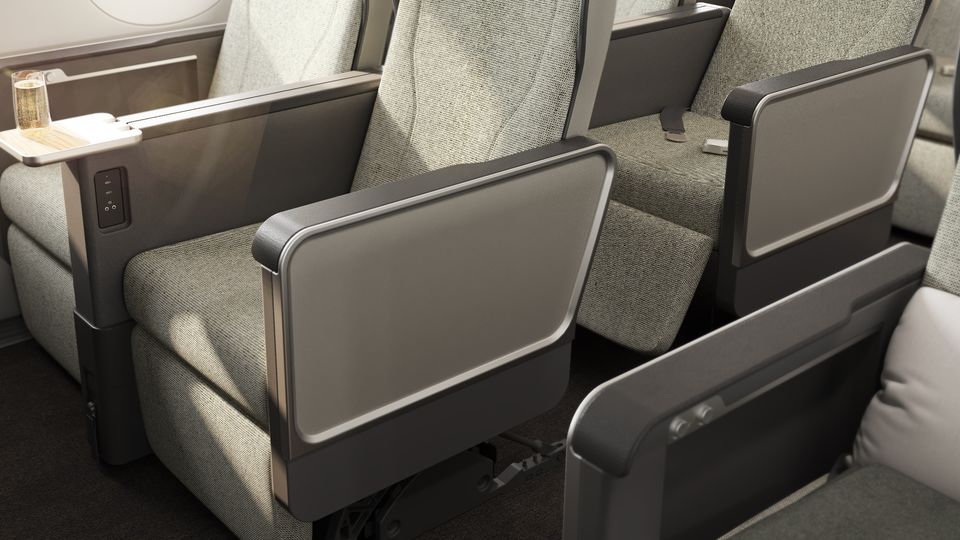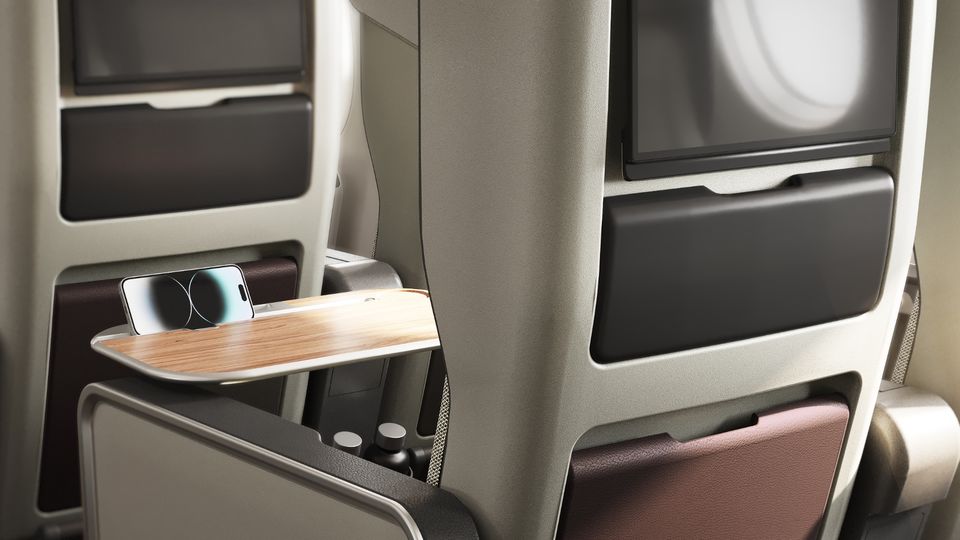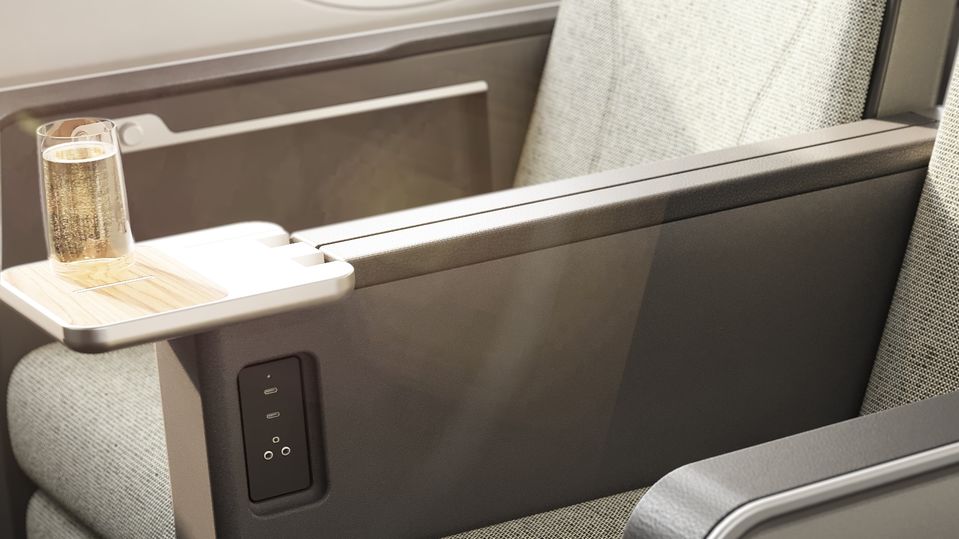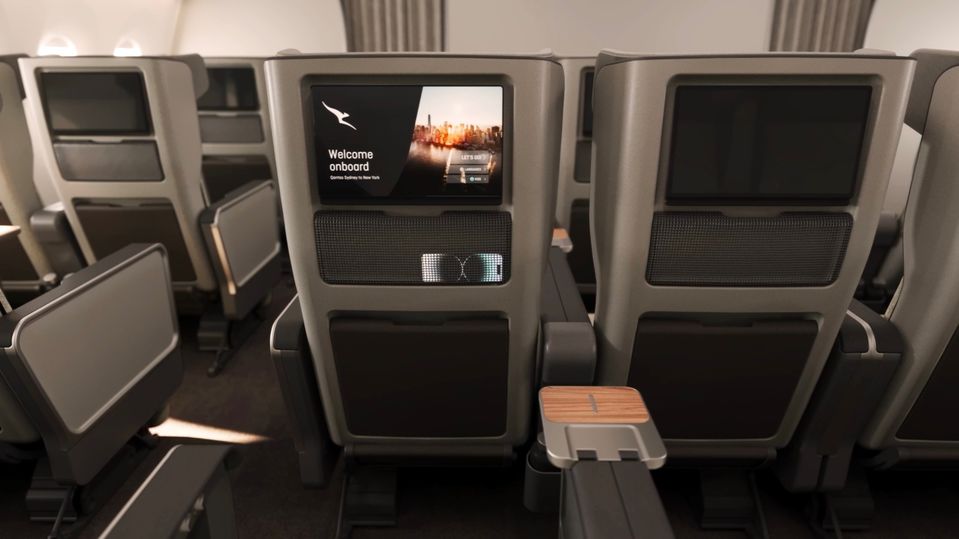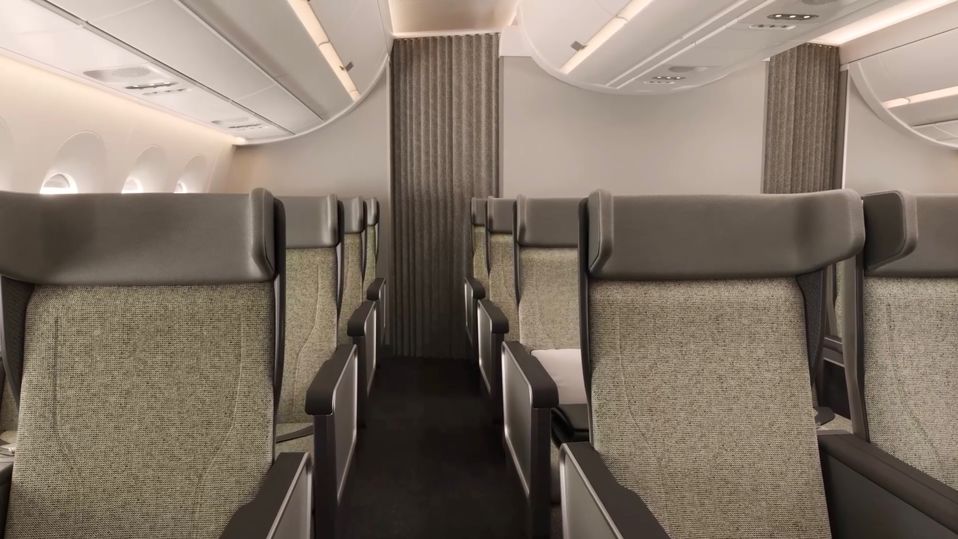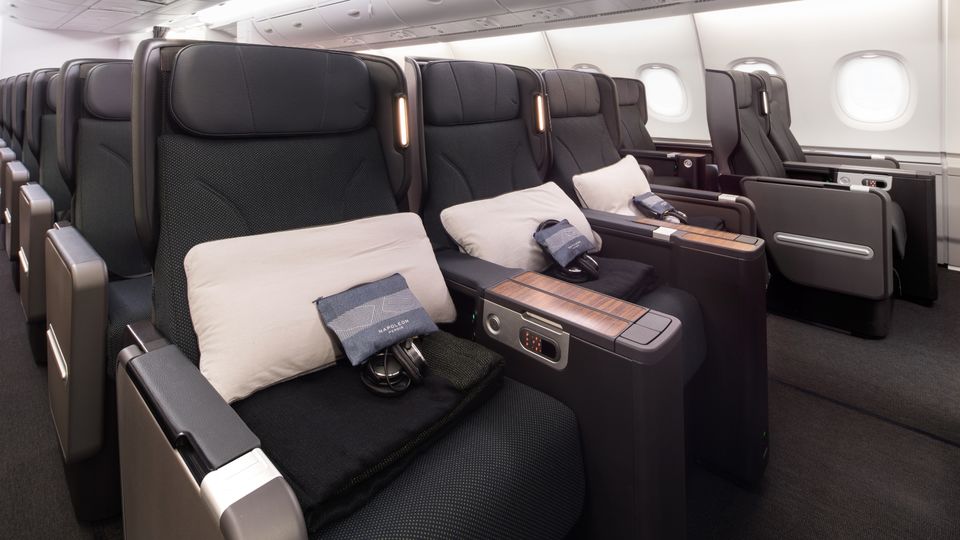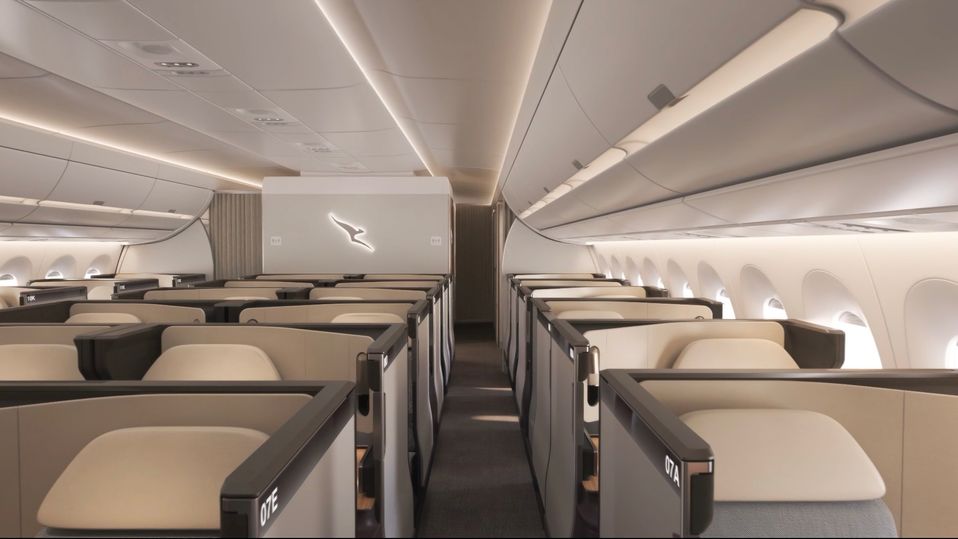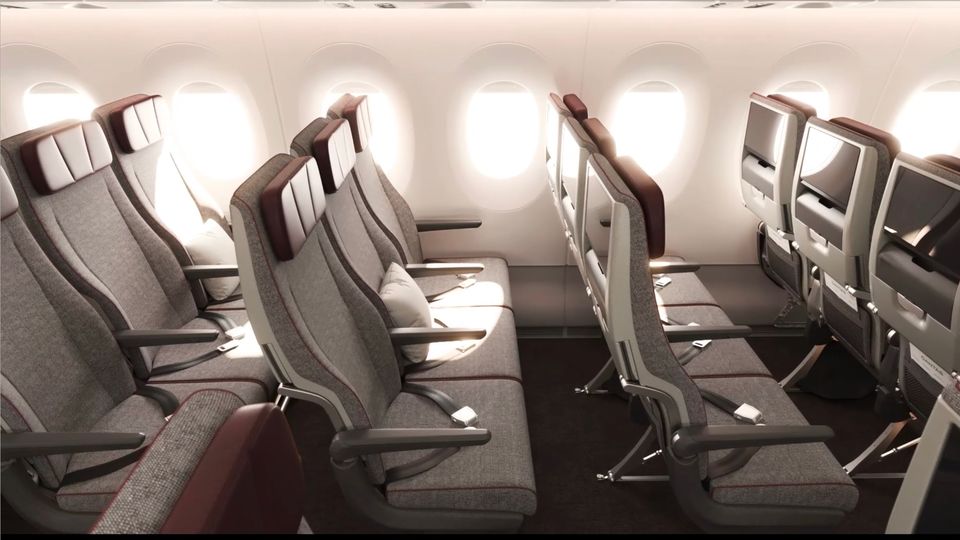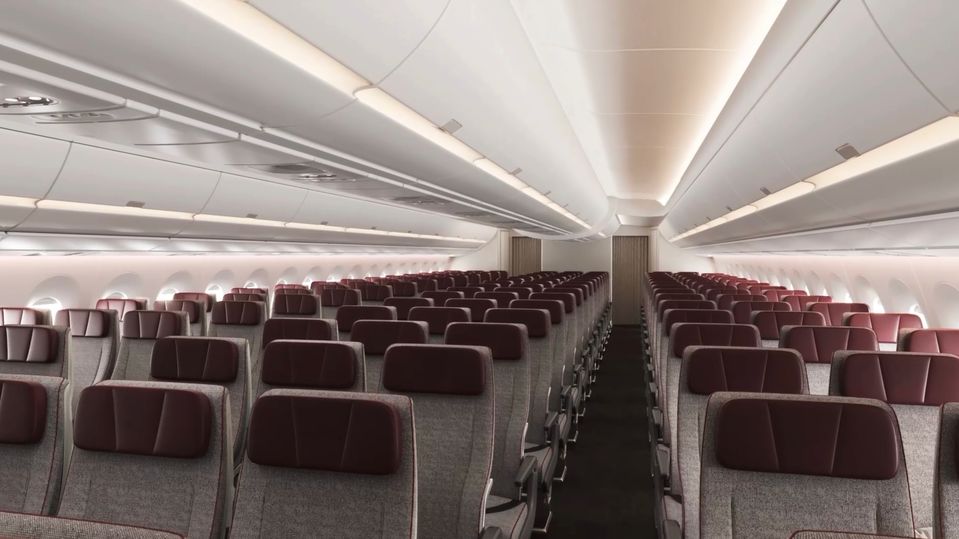Qantas has already revealed the Airbus A350 first class roomettes and business class suites which will cosset high flyers on its non-stop Project Sunrise marathons from Sydney and Melbourne to London, New York and Paris starting from late 2025.
But for those whose travel budget won’t stretch quite that far, the A350s will also be the launchpad for a fresh take on premium economy.
The airline has now pulled back the curtains on its third-gen premium economy seat, along with the inflight Wellbeing Zone located between the premium economy and economy cabins, completing the nose-to-tail A350 passenger experience.
Based on a product from seatmaker Safran, and customised by Qantas designer David Caon for greater comfort and convenience, the new Qantas A350 premium economy seat addresses the two concerns voiced by Executive Traveller since the previous-gen premium economy made its debut on the Boeing 787 (and has since been added to the Airbus A380 superjumbo fleet).
Firstly, there’s now more distance between the seats, removing that squeeze at the knees when the passenger in front of you reclines.
The 40” pitch is two inches greater than on the Boeing 787 and sits at the upper edge of the industry’s average 38” pitch (although some airlines top even that, such as 41” for Air New Zealand premium economy).
This should also make it easier to hop in and out of your seat during these ultra-long flights – something we expect a lot of travellers will be doing, and which Qantas will encourage via the Wellbeing Zone shared by premium economy and economy passengers.
Qantas and Caon have also done away with the current premium economy seat’s foot ‘hammock’ which often proved overly complicated, replacing it with a more conventional calf-rest extending from the front of the seat, while a footrest swings down from the bottom of the seat in front.
“We know that the foot netting presents challenges,” Caon admitted to Executive Traveller, “so we’ve developed something different down there…. what we’ve focused on is number one, ergonomics and number two, intuitive use (and) I think we’ve got it right on this product.”
The Qantas A350 premium economy seat still adheres to a ‘cradle’ concept which fully supports your body, “but it’s a more conventional approach” compared to the 787 and A380 premium economy seat, Caon says.
And he’s no stranger to flying at the back of the bus – when Executive Traveller spoke with Caon earlier this month he’d just returned from a trip to Milan where he clocked up the miles in premium economy and economy.
“We put the same level of detail and work into those seats as we do into first and business class,” Caon insists. “There are more people sitting in those seats than in the seats at the front, so we attach a lot of importance to them.”
A standout feature of the new A350 premium economy seat is the 8” wing on either side of the height-adjustable headrest, delivering increased privacy as well as giving passengers a comfortable napping position by resting their head to either side.
“I really wanted to give a little bit of privacy back to the passenger, which we’ve achieved with this winged headrest,” relates Caon, describing the feature as “a sort of ‘cobra head’ that’s quite pronounced.”
The new premium economy seat itself is more sculpted, with subtle touches such as scalloping the armrests to free up just a little extra room around the waist.
“We wanted to maximise passenger space and comfort, and although the A350 is so wide we are still working on every single little inch.”
Another creature comfort: a groove in the tray table lets you perch a phone or tablet for BYO entertainment, although this will make it more difficult to watch those movies or TV shows when there’s a meal sitting between you and your screen.
To keep your travel tech charged up, each Qantas A350 premium economy seat has two ‘high-power’ USB-C ports below the cocktail table under the shared armrest.
Qantas has opted to do away with the conventional shared AC power sockets in premium economy and economy, which makes sense when you consider that almost all devices from earbuds to laptops already use USB-C charging, with the iPhone 15 moving to USB-C this year.
A Qantas spokesperson tells Executive Traveller that both USB-C ports are together rated at 60W, so there’ll be ample juice to charge most mid-sized laptops.
Of course, you can also dial up Qantas’ library of inflight entertainment on the 13.3″ seatback screen, which streams Bluetooth audio to the traveller’s own headphones or earbuds, or jump online, with each Qantas A350 offering fast free WiFi to every passenger.
Another shift introduced by Caon is the lighter and brighter colour palette used in the Qantas A350’s premium economy cabin.
“In the past we’ve had dark fabrics and darker charcoal plastic, but in the A350’s premium economy cabin it’s all a bit lighter and elevated… there’s a less contrasted look and feel to the entire cabin, it’s crisper and more refined, and that was very conscious effort on our part induce ‘calm’ with colours, materials and fabrics.”
It’s part of giving the Qantas A350 a more coherent aesthetic from tip to tail, Caon explains.
“We’ve purposefully tried to be very consistent with the materials and finishes all the way back” rather than giving each cabin its own character.
“Aesthetically it’s carrying through a lot of the same language in terms of colours, lighting and mood from even first class, because we want it all to feel connected and holistic.”
This approach also extends not onto to the Wellbeing Zone but into economy class, where there’ll be 140 seats in a standard 3-3-3 arrangement but with a 33” pitch provide an extra inch over the 787.
“We’ve done away with the dark red fabric, the purple-type colours and just lightened everything up,” Caon says. “We just want everything to feel a little bit more peaceful.”
“But there’s this same fleck of the burgundy coming through: the same ox-blood burgundy leather that’s in business is also in the literature pocket in premium economy, and in economy we’ve used it as the headrest, but we’ve also gone away from that dark fabric on the seat.”
By David Flynn,
Source ExecutiveTraveller



